
William Cuthbert Faulkner was an American writer known for his novels and short stories set in the fictional Yoknapatawpha County, based on Lafayette County, Mississippi, where Faulkner spent most of his life. A Nobel laureate, Faulkner is one of the most celebrated writers of American literature and often is considered the greatest writer of Southern literature.

Light in August is a 1932 novel by the Southern American author William Faulkner. It belongs to the Southern gothic and modernist literary genres.

The Sound and the Fury is a novel by the American author William Faulkner. It employs several narrative styles, including stream of consciousness. Published in 1929, The Sound and the Fury was Faulkner's fourth novel, and was not immediately successful. In 1931, however, when Faulkner's sixth novel, Sanctuary, was published—a sensationalist story, which Faulkner later said was written only for money—The Sound and the Fury also became commercially successful, and Faulkner began to receive critical attention.

James Kimble Vardaman was an American politician from the U.S. state of Mississippi. A Democrat, he served as the Governor of Mississippi from 1904 to 1908 and then represented Mississippi in the United States Senate from 1913 to 1919.
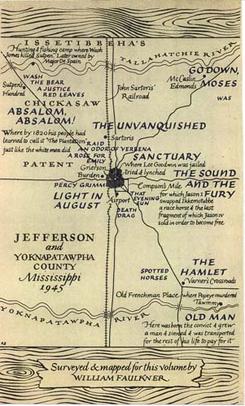
Yoknapatawpha County is a fictional Mississippi county created by the American author William Faulkner, largely based on and inspired by Lafayette County, Mississippi, and its county seat of Oxford. Faulkner often referred to Yoknapatawpha County as "my apocryphal county".
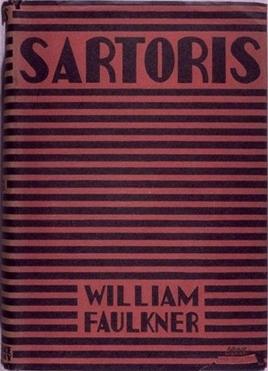
Sartoris is a novel, first published in 1929, by the American author William Faulkner. It portrays the decay of the Mississippi aristocracy following the social upheaval of the American Civil War. The 1929 edition is an abridged version of Faulkner's original work. The full text was published in 1973 as Flags in the Dust. Faulkner's great-grandfather William Clark Falkner, himself a colonel in the American Civil War, served as the model for Colonel John Sartoris. Faulkner also fashioned other characters in the book on local people from his hometown Oxford. His friend Ben Wasson was the model for Horace Benbow, while Faulkner's brother Murry served as the antetype for young Bayard Sartoris.
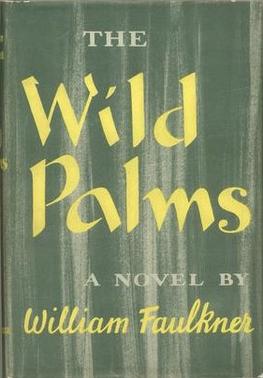
If I Forget Thee, Jerusalem is a novel by the American author William Faulkner published in 1939. The novel was originally published under the title The Wild Palms, which is the title of one of the two interwoven stories. This title was chosen by the publishers, Random House, over the objections of Faulkner's choice of a title. Subsequent editions have since been printed under the title If I Forget Thee Jerusalem, and since 2003 it is now usually referred to by both names, with the newer title following the historically first published title and in brackets, to avoid confusion: The Wild Palms [If I Forget Thee, Jerusalem].
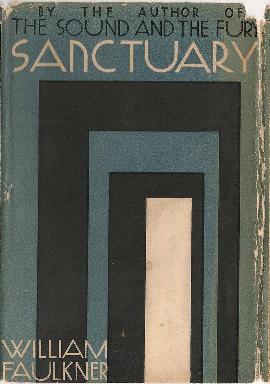
Sanctuary is a 1931 novel by American author William Faulkner about the rape and abduction of an upper-class Mississippi college girl, Temple Drake, during the Prohibition era. The novel was Faulkner's commercial and critical breakthrough and established his literary reputation, but was controversial given its themes. It is said Faulkner claimed it was a "potboiler", written purely for profit, but this has been debated by scholars and Faulkner's own friends.
"That Evening Sun" is a short story by the American author William Faulkner, published in 1931 in the collection These 13, which included Faulkner's most anthologized story, "A Rose for Emily". The story was originally published, in a slightly different form, as "That Evening Sun Go Down" in The American Mercury in March of the same year.

In physical geography, a dell is a grassy hollow—or dried stream bed—often partially covered in trees. In literature, dells have pastoral connotations, frequently imagined as secluded and pleasant safe havens.

The Hamlet is a novel by the American author William Faulkner, published in 1940, about the fictional Snopes family of Mississippi. Originally a standalone novel, it was later followed by The Town (1957) and The Mansion (1959), forming the Snopes trilogy.

The Mansion is a novel by the American author William Faulkner, published in 1959. It is the last in a trilogy of books about the fictional Snopes family of Mississippi, following The Hamlet and The Town.

Requiem for a Nun is a work of fiction written by William Faulkner. It is a sequel to Faulkner's early novel Sanctuary, which introduced the characters of Temple Drake, her friend Gowan Stevens, and Gowan's uncle Gavin Stevens. The events in Requiem are set in Faulkner's fictional Yoknapatawpha County and Jackson, Mississippi, in November 1937 and March 1938, eight years after the events of Sanctuary. In Requiem, Temple, now married with a child, must learn to deal with her violent, turbulent past as related in Sanctuary.
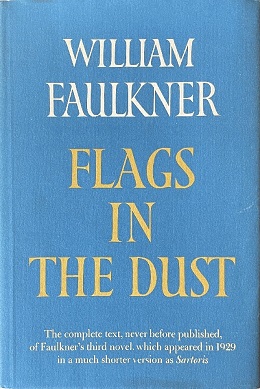
Flags in the Dust is a novel by the American author William Faulkner, completed in 1927. His publisher heavily edited the manuscript with Faulkner's reluctant consent, removing about 40,000 words in the process. That version was published as Sartoris in 1929. Faulkner's original manuscript of Flags in the Dust was published in 1973, and Sartoris was subsequently taken out of print.
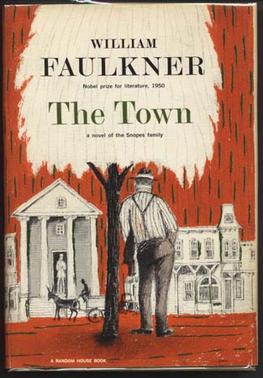
The Town is a novel by the American author William Faulkner, published in 1957, about the fictional Snopes family of Mississippi. It is the second of the "Snopes" trilogy, following The Hamlet (1940) and completed by The Mansion (1959).
"Spotted Horses" is a novella written by William Faulkner and originally published in Scribner's magazine in 1931. It includes the character Flem Snopes, who appears in much of Faulkner's work, and tells in ambiguous terms of his backhand profiteering with an honest Texan selling untamed ponies. "Spotted Horses" was later incorporated into The Hamlet under the title "The Peasants: Chapter One".

As I Lay Dying is a 2013 American drama film directed and co-written by and starring James Franco, based on William Faulkner's 1930 novel of the same name. The film was screened in the Un Certain Regard Section at the 2013 Cannes Film Festival.

Dean Faulkner Wells was an American author, editor, and publisher.
















